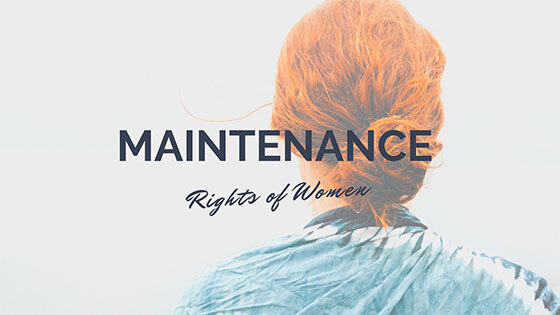By Lauren Prem
Women in India, like in most developing countries across the world, have suffered long-standing oppression to the point where taglines such as “striving for gender equality”, “women empowerment” and “women rights” are so popular and basic for any write-up title. In search of a unique and catchy title, I opened ChatGPT to send a prompt – “write an empowering and catchy quote on women who have discriminatory personal laws in India” and received the following response:
“Women are not just subjects of personal laws; they are champions of change, fighting for justice and equality in every corner of India.”
I was pleasantly shocked to see the response especially because it reflected the current scenario of Muslim women in India that resulted in a Supreme Court verdict reiterating the maintenance rights of Muslim women under section 125 of the CrPC in Mohd. Abdul Samad v. State of Telangana [2024 SCC OnLine SC 1686] as already held in the famous Shah Bano case [Mohammed Ahmed Khan v Shah Bano Begum, 1985 (2) SCC 556].
A petition for appeal, before the Supreme Court, was moved by the husband on grounds that a woman cannot avail maintenance benefits under section 125 of the CrPC in the presence of the Muslim Women (Protection of Rights on Divorce) Act, 1986 (hereinafter referred to as ‘the 1986 act’), which is a specific law. The contention is premised on the well-established rule of interpretation that a specific law will prevail over a general law on the same matter, in case of any conflict as regards which law will apply.
The court, on 10th July 2024, passed a verdict stating that a Muslim woman can avail maintenance benefits under section 125 of the CrPC despite there being a specific law. The court recognised that the 1986 act provided for maintenance only till the iddat period, which ran contrary to the jurisprudence behind maintenance. The purpose of maintenance is to equip women to lead a dignified life even after the cessation of her marriage and the 1986 act does not solve the purpose as it fails to provide for adequate maintenance, despite the objective of the act grounded in ensuring access to justice. The court, in this case, went beyond mere application of the 1986 act and considered foundational jurisprudential concepts like justice and equity.
Our legal history has repeatedly shown us that landmark judgements are not an outcome of mere interpretation of the law. Rather, they are a result of meticulous interpretation of judges who bear ‘justice’ in their hearts and minds, not just the legal provisions. The basic structure doctrine that forms the very basis of present-day adjudication, would not have existed today, had the judiciary stayed aloof of judicial activism or anything beyond strictly interpreting the law.
The doctrine exists solely because judges feared that the constitution would be misused in the absence of a strong framework to determine constitutionality of a particular legislation. In simple terms, they had justice in their hearts and minds, in addition to possessing knowledge of the law.
The present judgement is also one that reflects a justice-oriented approach, not merely in the outcome but through its words. The court stressed upon the aspect of adequacy and sufficiency of maintenance in answering the legal question of which law would apply to Muslim women. Had the court taken a formalistic approach (restricted to interpretation of the law alone), it would have rendered the 1986 act applicable, thereby providing no opportunity to Muslim women to opt for the CrPC provision.
In addition, the CrPC provision has also undergone an amendment in the year 2001 [by Section 2(i)(a), act no. 50] to delete the words “not exceeding 500 rupees in the whole”, thereby eliminating any kind of upper cap on the amount of maintenance. The court highlights the aspect of how this new amendment being passed subsequent to the the 1986 act, renders the latter legislation insignificant. The approach of the court in this regard also revolves around the question of which law would benefit women better, rather than delving into the technicalities of applying each law as every ordinary judge would do so.
As Huey Newton said “Laws should be made to serve the people. People should not be made to serve the laws.” This moral principle is prominent in the context of deciding which law would apply to a particular scenario or class of persons. The court abided by this principle by opening opportunities for Muslim women to choose the CrPC provision, rather than making them subjects of the 1986 act.
The court has been particular in ensuring that no decision is taken so as to deprive women of enjoying the rights guaranteed under our constitution. This cardinal principle of not holding back or non-retrogression has been evolved through many judgements and established as a definite rule. This principle has been followed through a purposive interpretation which holds that the nature of the 1986 act is akin to a social legislation and welfare lies at its heart.
This decision also ensures that undue financial burden is not placed on the husband as section 127(3)(b) of the CrPC deals with a situation where maintenance has already been paid through customary or personal law. The provision bestows power upon the magistrate to cancel orders made under section 125 of the CrPC, in situations where maintenance is already paid. In essence, the court has merely opened the possibility of opting for a comparatively higher welfare provision and has not in any way prompted double payment of maintenance by the husband. The judicial intent is rooted solely in upholding the interests of women, as article 15(3) aims to do.
The judiciary has succeeded in meeting people’s expectations through a purposive interpretation that looks beyond the letters of the law and goes on to honour the spirit of law. Further, it has proven that women are not subjects of personal laws. With increasing access to education, women have proven to be champions of change striving for equality in every nook and corner of India and the judiciary has facilitated the same by setting a good precedent.




